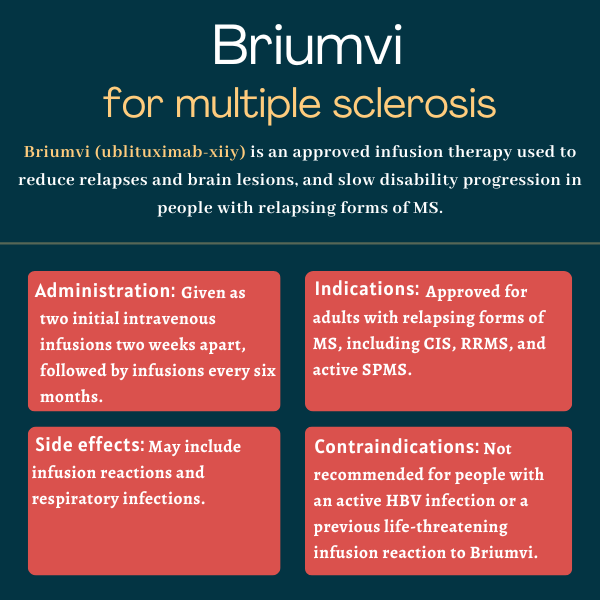FAQs about Briumvi
There are no known interactions between Briumvi and alcohol, but patients are advised to speak with their healthcare team about whether it is safe to drink while on the medication.
Briumvi was approved by the U.S. Food and Drug Administration in December 2022 for adults with relapsing forms of multiple sclerosis (MS). The approved indications include clinically isolated syndrome, relapsing-remitting MS, and active secondary progressive MS.
According to animal studies, Briumvi may cause harm to a developing fetus and thus is not recommended for use during pregnancy. Patients who are able to become pregnant are advised to use effective contraceptive methods while on Briumvi and for at least six months after stopping treatment.
In clinical trials, Briumvi induced a rapid and marked depletion of B-cells within two weeks after the first dose, but the earliest signs of benefits were reported at six months. However, each person may react differently to medications, and patients are advised to discuss with their healthcare team how Briumvi may help in their particular case.
Neither hair loss nor weight gain have been reported as a side effect of Briumvi. Other anti-CD20 therapies also generally do not cause these side effects. Patients who experience unanticipated effects after starting a new multiple sclerosis therapy are advised to talk to their healthcare provider.
Related Articles

 Fact-checked by
Fact-checked by 



